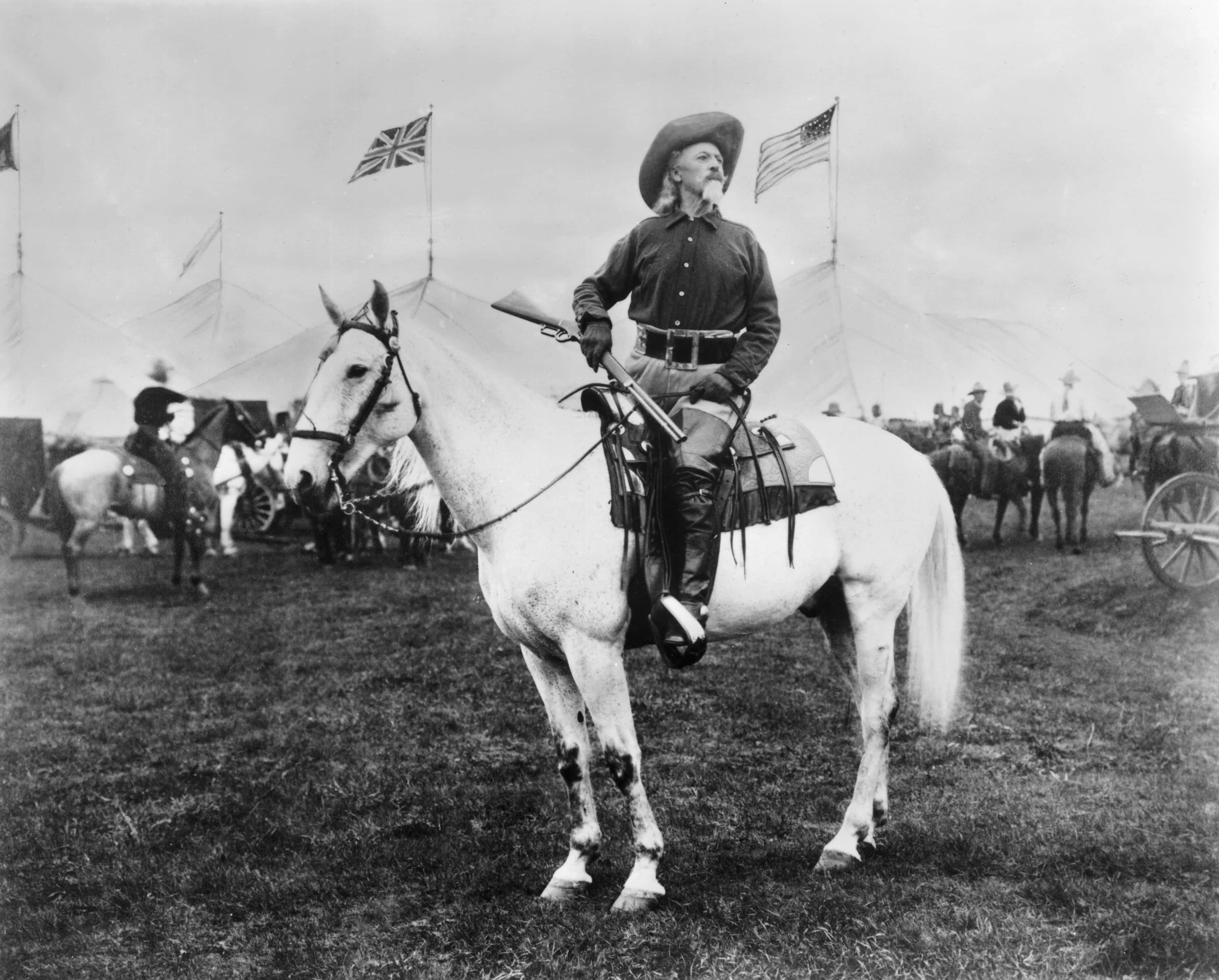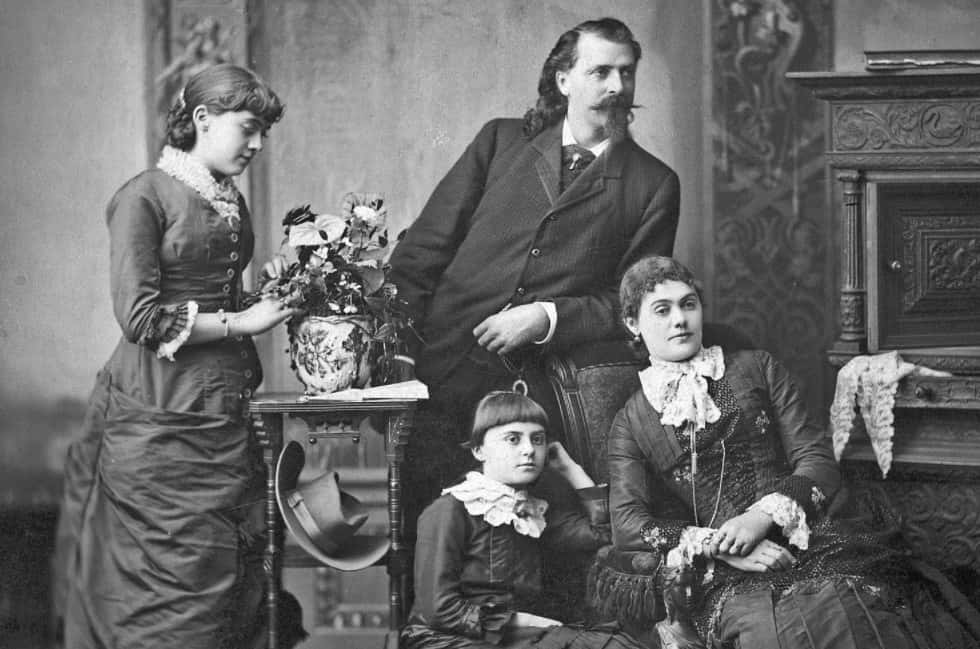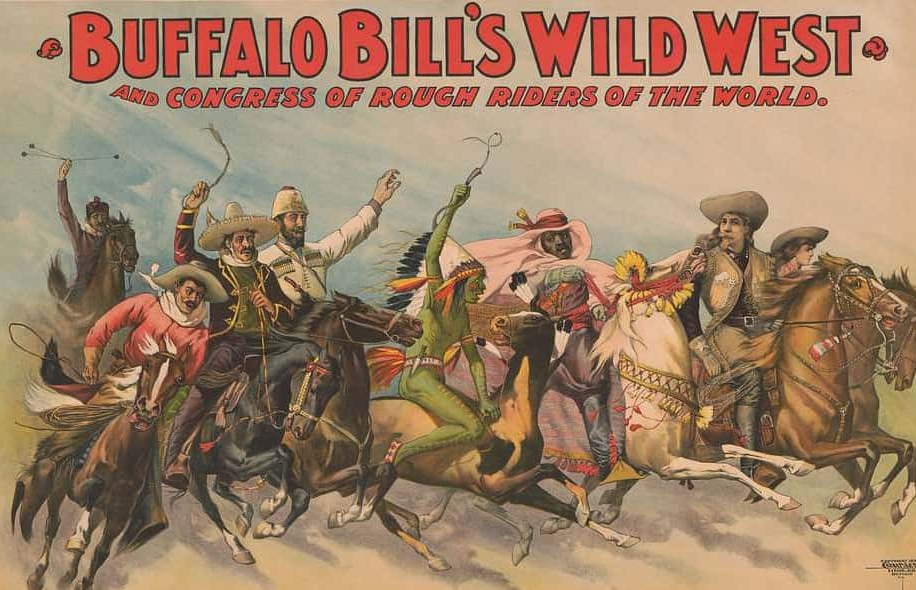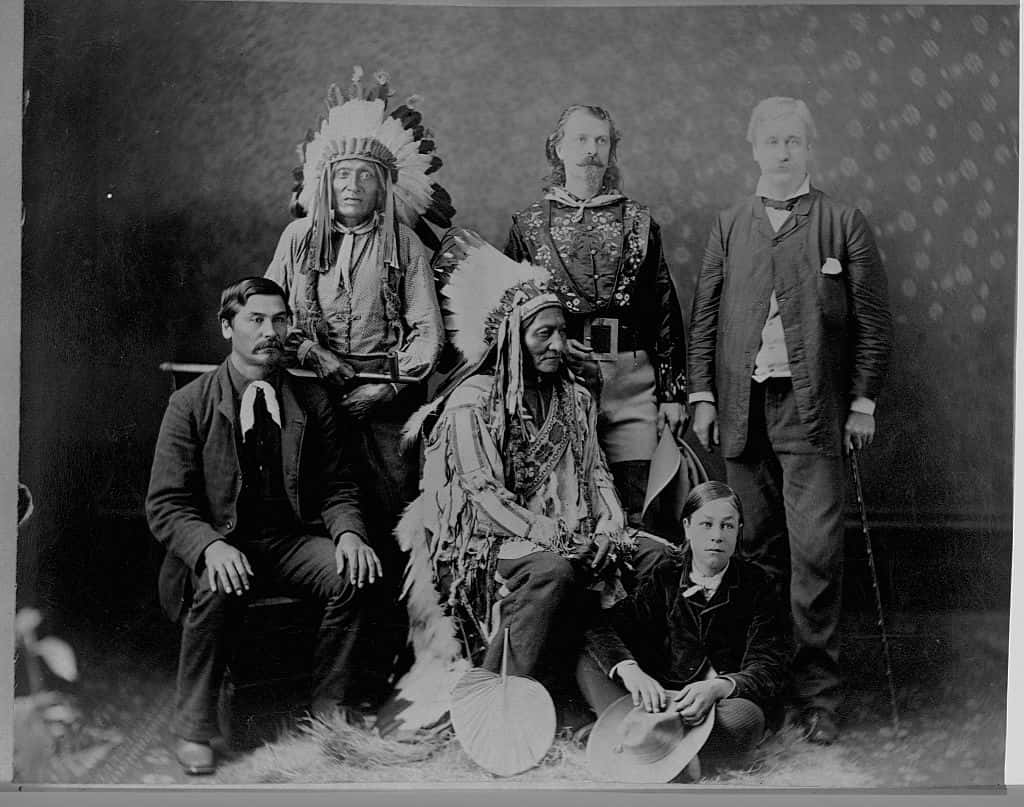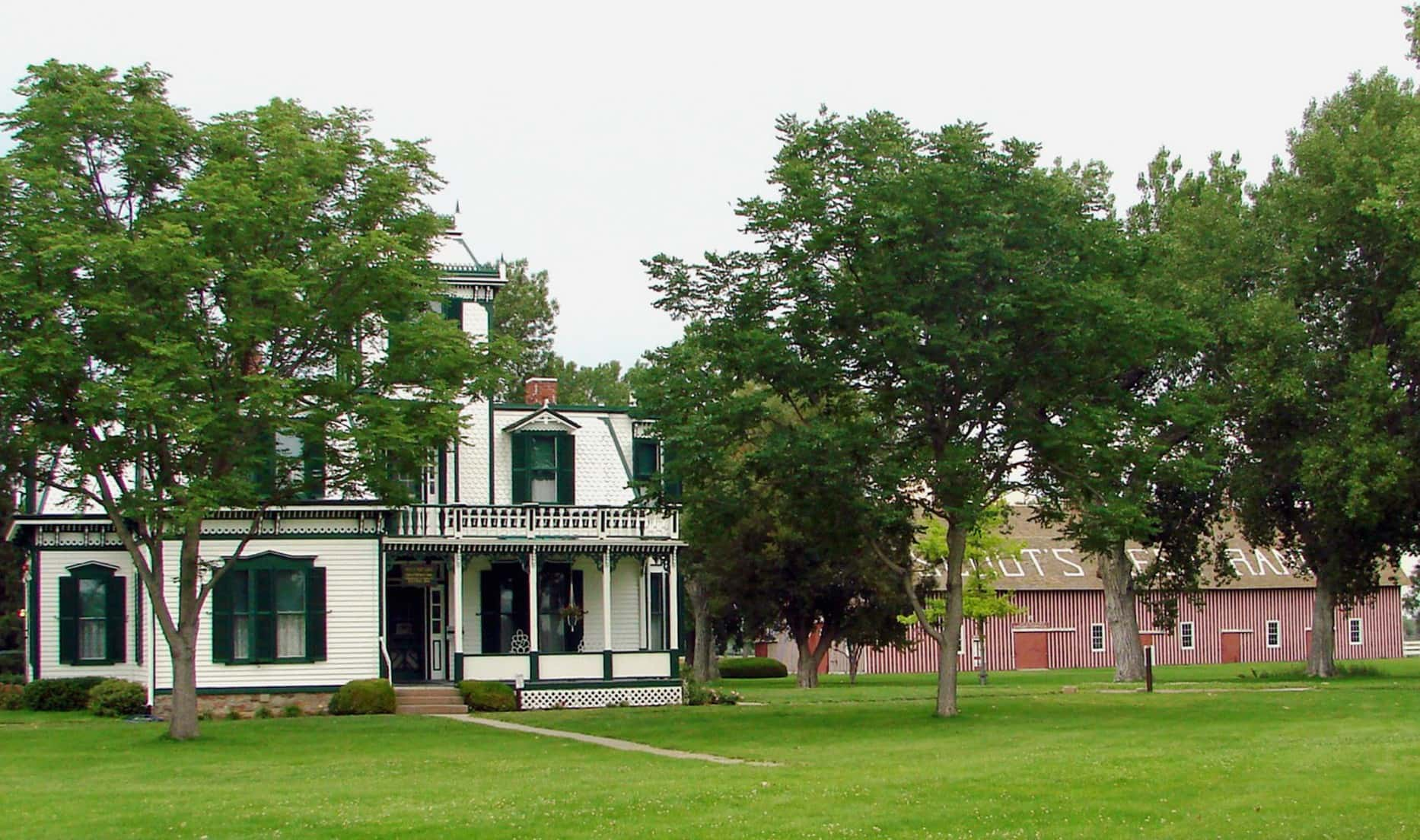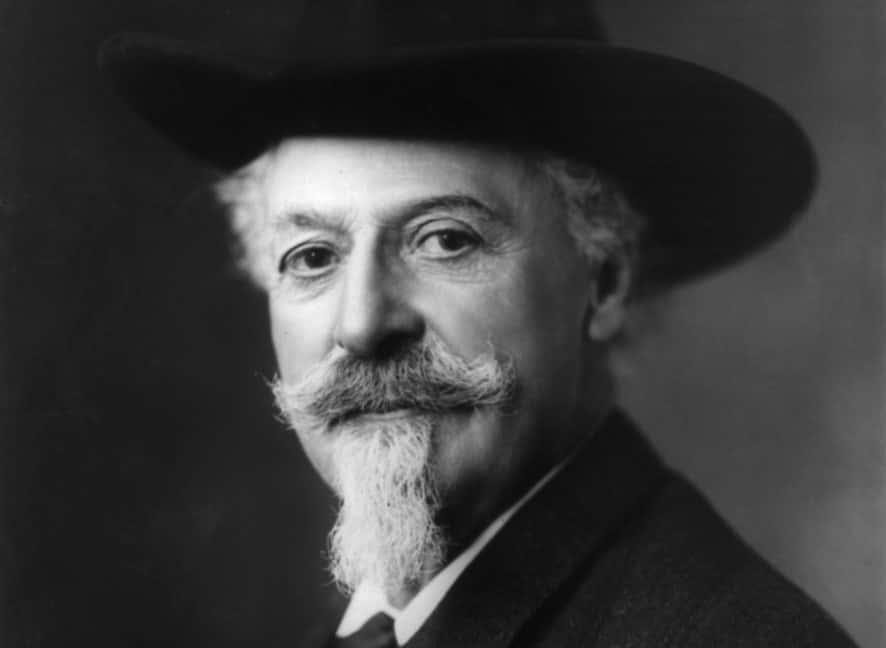"It was because of my great interest in the West, and my belief that its development would be assisted by the interest I could awaken in others, that I decided to bring the West to the East through the medium of the Wild West Show".
Buffalo Bill Cody has always been one of the primary names associated with the Wild West. Even for back then, Buffalo Bill’s fame and legend began building from a young age, but before anyone had heard of him he had still experienced an incredible series of adventures and experiences. Cody also became famous for selling the myth of the Old West to cheering crowds across the world. So what was it that made Cody’s show so successful? Who was the man behind the show? Give these facts a look to find out more about the man who became synonymous with America's Wild West.
1. The All-American Hero?
William Frederick Cody (to give his full name) was actually Canadian-American. His father was born and raised in what is now the city of Mississauga in Ontario. Cody himself lived there for many years in his youth in between his birth in Iowa Territory and the family moving south to the US Midwest.

2. Heroic Role Model
Referring to Cody's father, Isaac Cody was strongly against slavery, a practice that was considerably permissible in 1853. While Cody’s family was living in Iowa, his father was invited to speak at a trading post which was often frequented by pro-slavery-minded men. Understandably, they disagreed with Isaac's speech, and one specific man conveyed his dissent by piercing Isaac with a Bowie blade. Twice.
3. We Can Expect Great Things from You
Cody’s father managed to survive the attack on his life, but when the family moved to Kansas, things didn’t get better for them. Being anti-slavery wasn’t cool in Kansas, which led to Isaac Cody living separately from his family to avoid putting his wife and children in any more danger than necessary. For his part, young Cody found out about a planned attack on his father’s life when he was set to pay the family a visit. Cody’s response was a typical one for a pre-teen child (who also happened to be sick at the time); he rode 30 miles alone to warn his father about the ambush!
4. Authorized Non-Biography
In 1869, Cody was a 23-year-old man who’d already had a lifetime’s worth of adventures and odd jobs. Despite that, writer Ned Bluntline felt the need to make up a lot about him when he wrote a book called Buffalo Bill, King of the Bordermen, which was first serialized that year in the Chicago Tribune.
5. Things Snowballed
This initial story about Cody was so popular that Bluntline and other writers spent the 1870s writing sequels to it. Just like Billy the Kid, Cody became a legendary, heavily fictionalized figure from a very young age.
6. That’s a Lot of Buffalo…
The origin of Cody’s nickname, as you can imagine, stemmed from a job he had providing buffalo meat for the workers employed by Kansas Pacific Railroad. Allegedly, Buffalo Bill shot no fewer than 4,282 buffalo in a space of 18 months between 1867 and 1868!
7. Why Not Just Flip a Coin?
Despite his daunting (or terrifying) streak of victories, Cody had to struggle to earn the title "Buffalo Bill". He embarked on a challenge with fellow hunter Bill Comstock where the two men had eight hours to shoot as many buffalo as they could. Comstock managed to bring down 48 buffalo, but he lost to Cody, who toppled 68 to claim the title for himself.
8. A Hunter’s Testimony
You might be curious as to how Cody managed to surpass Comstock in the buffalo showdown for the "Buffalo Bill" moniker. Well, Cody was gracious enough to explain it for us: According to the man himself, Comstock would pursue the buffalo herds from the rear, until the buffalo carcasses were “scattered over a distance of three miles". Cody, in comparison, would steer his horse directly into the midst of a herd, eliminate its leaders, and then steer the remaining terrified group to run in circles, systematically removing them at his pleasure.
9. Take My Word for It!
Part of Cody's legacy was being known as an "Indian fighter," during an era when a white man could achieve hero status through engaging in battles against Native Americans. According to Cody himself, this reputation originated when he took part in the 1857-1858 Utah conflict. Allegedly, he managed to defeat a Sioux warrior, despite being around 11 or 12 at the time.
10. The Man vs. the Myth
The problem with documenting Cody’s life is that he made many claims that we just have to take his word for, due to a lack of evidence to support them. For example, Cody claimed to have ridden for the Pony Express during his youth, but this is hotly disputed by historians. To be fair, half the things he really did do were so extraordinary that it’s hard to separate fact from fiction across the board!

Sign up to our newsletter.
History’s most fascinating stories and darkest secrets, delivered to your inbox daily. Making distraction rewarding since 2017.
11. In Case It’s True
For what it’s worth, Cody claimed that he first came into contact with the Pony Express when he headed west to find gold in 1860, at the age of 14. However, he never made it to the gold fields because he met an agent of the Pony Express and began doing jobs for them. He claimed to have helped build corrals and stations before working with them as a rider, which he did until he went home to care for his ailing mother.
12. A Classy Hunter
One of Cody's most renowned items was a Springfield Model 1866. Like many enthusiasts of such weaponry, he had a name for this particular piece: Lucretia Borgia. For those of you giving a confused look, Cody got this name from the infamous woman who appears as a main character in Victor Hugo’s opera Lucrezia Borgia. It seems that Cody was a man for the theatre even in his youth!
 Everett Collection, Shutterstock
Everett Collection, Shutterstock
13. Important Connections
Turns out, the Wild West was a much smaller world than we thought. Cody was actually old friends with the other most famous "Bill" of the West—"Wild Bill" Hickock, a notorious gunslinger who worked an incredible amount of jobs, just like Cody.
14. Entering the Work Force
Regrettably, Cody's father succumbed to health issues resulting from a piercing wound, as well as a respiratory infection, in 1857. Cody was only 11 years old at the time, and he had to take a job to help his financially struggling family. His first gig was with a freight carrier, delivering messages on horseback between the workmen and the drivers.
15. Go-Getter
As soon as conflict broke out, Cody promptly volunteered to fight for the Union without hesitation. However, he was turned away because he was considered too young.
16. Never Mind, We Want You!
Cody did eventually get the chance to enlist in 1863, when he was 17 years old. He joined the 7th Kansas Cavalry, serving in Company H as a private until he was discharged in 1865.
17. Everyone’s a Critic…
In December of 1872, Cody reunited with Ned Bluntline to act in The Scouts of the Prairie, a Wild West show which the latter was producing. Acting alongside his friend Texas Jack Omohundro, Cody received overwhelmingly negative reviews from critics. One of them even compared his performance to a “diffident schoolboy". However, the general audiences loved the play and Cody often performed to sold-out crowds, proving once again that nobody ever went broke underestimating an American audience.
18. And Special Guest…
In 1873, flush with success onstage, Cody invited his old friend, Wild Bill Hickock, to take part in another play, titled Scouts of the Plains. However, Hickock left the group after just a few months of being involved, as he hated acting. According to one anecdote, Hickock was once so irritated by a spotlight shining on him that he drew his firearm and shot at it!
19. He Should Have Tried Joining the Stonecutters Too
In between all his work as a scout, actor, showrunner, and more, Cody found the time to join the Freemasons, a fraternal organization which had originally been comprised of stonemasons. In 1889, Cody achieved the rank of Knight Templar amongst the Freemasons. In 1894, he also ascended to the 32-degree rank of the Scottish Rite of Freemasonry. When his life ended, he was accorded a full Masonic funeral, whatever that entails.
20. Save the Buffalo, Damnit!
Surprisingly and ironically, despite his history of hunting numerous buffalo, Cody identified as a conservationist who advocated for a specific hunting season and also enforced a prohibition on hide-hunting. Call it a guilty conscience?
21. One-Upping You
In 1893, while he was living large with his traveling show, Cody was approached by the people behind the Chicago World’s Fair. They wanted Cody to be part of the event as an exhibition. Not only did Cody turn them down, he actually set up an independent exhibition nearby!
22. Entertaining the Aristocracy
Cody would continue scouting for a long period, even beyond his service in the US armed forces. In 1872, the Grand Duke Alexei Alexandrovich of Russia came to the US and took part in a hunting expedition. It was a very publicized event, and Cody served as a scout during the hunt.
23. A Star is Born
In 1883, Cody formed Buffalo Bill’s Wild West in North Platte, Nebraska. It was set up like a circus, going on annual tours presenting different acts in its show. This began Cody’s serious tours around the United States and Europe, which made him a truly international celebrity.
24. Can We Try the Acropolis?
Speaking of those European tours, Cody embarked on four tours of Europe between 1887 and 1892, with another four happening between 1902 and 1906. Throughout these eight tours, he visited such countries as Belgium, the Netherlands, France, Spain, Germany, England, Romania, Poland, Hungary, and Italy, where Cody met with Pope Leo XIII! Sadly, Cody was unable to perform his show inside the Colosseum, much to his frustration!
25. A City and a Team
Despite the fact that Cody had no real connection to the area, the city of Buffalo, New York has used his famous nickname for multiple sports teams, most famously for their NFL team, the Buffalo Bills.
26. Meet Cute
While Cody was enlisted during the period of internal conflict, he was stationed in St. Louis for some time. While he was there, he met a woman named Louisa Frederici. In 1866, Cody married her barely a week after his 20th birthday.
27. The Show Must Go On
In 1893, Cody expanded the show to Buffalo Bill’s Wild West and Congress of Rough Riders of the World. The show went on to include not just Native Americans riders, but also horsemen of South American, Turkish, Arabic, and Mongolian backgrounds. These horsemen would all open every performance with a parade to demonstrate each culture’s equestrian style.
28. God Save the Queen
In 1887, the British celebrated Queen Victoria’s jubilee year. Naturally, Cody brought his traveling show into London for the special occasion. The Queen herself was present to watch one of the performances, and Cody spent more than five months touring England, staying in such cities as London and Birmingham.
29. Uh Oh
While he was embarking on all these shows in the US and Europe, his wife Louisa and four children stayed in North Platte. Eventually, Louisa was suspicious enough of his potential affairs that she surprised him by confronting him in Chicago at his suite, which had allegedly been registered under “Mr. and Mrs. Cody,” though there seems to be no proof of Bill having actually been unfaithful.
30. Star Power
Many famous figures of the Wild West performed in Cody’s traveling show. These included Gabriel Dumont (fleeing Canada after the failure of the North-West Rebellion), sharpshooting rivals Annie Oakley and Lillian Smith, legendary Sioux leader Sitting Bull, and even well-known frontierswoman Calamity Jane!
 Unknown Author, Wikimedia Commons
Unknown Author, Wikimedia Commons
31. A Man of Irony
Belying his reputation as an "Indian fighter," Cody openly declared that "every Indian outbreak that I have ever known has resulted from broken promises and broken treaties by the government".
 Wikimedia Commons, Royale Photographie
Wikimedia Commons, Royale Photographie
32. Well-Intentioned?
Despite the fact that his shows always featured Native Americans attacking stagecoaches or wagon trains, Cody was convinced that he was helping them by giving said Native Americans a decent wage when they toured with him. He always introduced them as “the former foe, present friend, the American". Not only that, Cody urged the Native Americans in his employ to bring their families along during the tours. He wanted his paying audiences to be able to see the camps around his shows and be reminded that the so-called villains of his show had family and friends just like other people.
33. A Happy Ending After All
Incredibly, despite being forced to stay married, Cody and Louisa did end up reconciling. In 1910, Louisa began touring with her husband and continued until he succumbed in 1917.
34. Money Well Spent
By 1886, Cody was so financially successful from his shows that he was able to purchase a ranch just outside of North Platte that covered 4,000 acres. He also had large barn and an 18-room mansion built on said ranch.
35. Check the Credits
Not surprisingly, Cody has been portrayed multiple times in the history of film, as far back as 1926 and as recently as 2004. The many actors who have brought Cody to life on the silver screen include Paul Newman, Charlton Heston, Roy Stewart, and JK Simmons. Not a bad lineup!
36. Six Degrees of Buffalo Bill
In 1866, while Cody was still serving as a scout for the US Army, he was under the command of a few different officers. One of them happened to be the now-infamous George Armstrong Custer, best known for getting himself and hundreds of other cavalrymen massacred at Little Big Horn. According to legend, Cody would go on to play Custer in reenactments performed by his show.
37. Buffalo Bill the Feminist
Cody also showed that he was ahead of his time when he insisted on equal pay for the men and women who performed in his shows. As he put it, “What we want to do is give women even more liberty than they have… Let them do any kind of work they see fit, and if they do it as well as men, give them the same pay". Kudos to you, Cody.
38. A Little Farther East Than You Thought
Incredibly, one region of the world which was especially inspired by Cody and his show was the Belgian Congo! In the 1950s, a subculture among the Congolese youth embraced Cody’s legacy so much that boys and girls would dress up like him and form gangs, calling themselves "Bills". Some of these youths later had music careers in the Congo after it had become independent.
39. Subtle Split-Up? Yeah Right!
In 1904, Cody decided that 38 years of marriage were enough for him; he filed for divorce, blaming years of arguments between him and his wife, his sisters-in-law, and even his own children. However, the topic of divorce was highly shameful back in the 19th century, so Cody wanted to keep things as quiet as possible, not wanting it to affect his reputation. He was unsuccessful, and the newspapers had a field day with the news.
40. Cody vs. Cody
In the ensuing divorce proceedings, Cody (falsely) accused his wife of trying to poison him on multiple occasions and being generally intolerable. Louisa initially wanted to remain married, however, insisting that the bad blood between them had been due to Cody’s (alleged) affairs. As the courtroom battle intensified, the situation grew more solemn when their daughter, Arta Louise, succumbed to "organic trouble". This only made Cody and Louisa even more hostile to each other. In 1905, the judge ruled that the divorce would not go through, and Cody and Louisa would stay married.
41. A Town and a Grave
While traveling in 1895, Cody was so enthralled by the geographical beauty and potential of a plot of land in Wyoming that he decided to help found a town there. Named after himself, the town of Cody was incorporated in 1901. Following Cody's passing, a wave of sentiment grew among the townspeople, including some of Cody's kin, advocating for his interment in the town that he had a significant role in establishing. However, Cody had made it clear that he wished to be buried on Lookout Mountain near Denver, Colorado, which overlooked the Great Plains. Lookout Mountain was ultimately where he was laid to rest.
42. Sinister Plot
Even after Cody was no more and laid to rest, the debate over who could claim his remains persisted. In 1948, the American Legion’s chapter in Cody, Wyoming offered a reward for anyone who could bring Cody to the city for a reburial where they felt he truly belonged. In response, the Legion’s Denver chapter organized guards to protect Cody’s grave on Lookout Mountain while they worked on making a deeper hole to secure him!

















